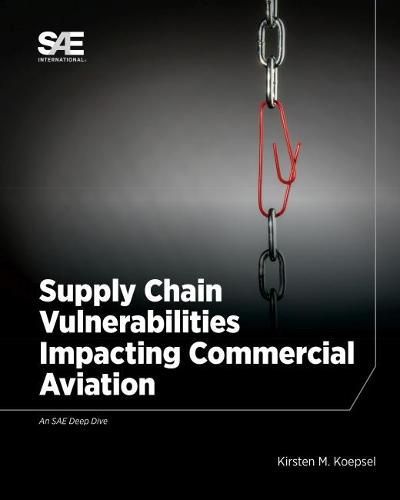Readings Newsletter
Become a Readings Member to make your shopping experience even easier.
Sign in or sign up for free!
You’re not far away from qualifying for FREE standard shipping within Australia
You’ve qualified for FREE standard shipping within Australia
The cart is loading…






Written by Kirsten Koepsel, a lawyer and engineer whose work has focused on aviation cybersecurity, Supply Chain Vulnerabilities Impacting Commercial Aviation addresses the big question facing aircraft manufacturers today: keep the work in house or outsource it? The ongoing battle between cost cutting and supply-chain control is ever more visible as aircraft OEMs have full order books and tight delivery schedules.
Since the 1980s, commercial aviation, like many other industries, looked for ways of more economically sourcing parts and services. The new partnerships between OEMs and suppliers at multiple levels, did make the industry nimbler and more flexible. Yet, it also introduced a higher level of instability, risks and vulnerabilities to the aviation ecosystem.
Supply Chain Vulnerabilities Impacting Commercial Aviation discusses the differences in requirements depending on the buyer of the aircraft (governmental or not), ranging from delivery delays to risks linked to cybersecurity and the Internet of Things (IoT), including possible problems with faulty sensors and counterfeit parts. The book also analyses the consequences of not having visibility into lower-tier suppliers, and how prepared they are when it comes to possible disruptions such as earthquakes or political unrest.
$9.00 standard shipping within Australia
FREE standard shipping within Australia for orders over $100.00
Express & International shipping calculated at checkout
Written by Kirsten Koepsel, a lawyer and engineer whose work has focused on aviation cybersecurity, Supply Chain Vulnerabilities Impacting Commercial Aviation addresses the big question facing aircraft manufacturers today: keep the work in house or outsource it? The ongoing battle between cost cutting and supply-chain control is ever more visible as aircraft OEMs have full order books and tight delivery schedules.
Since the 1980s, commercial aviation, like many other industries, looked for ways of more economically sourcing parts and services. The new partnerships between OEMs and suppliers at multiple levels, did make the industry nimbler and more flexible. Yet, it also introduced a higher level of instability, risks and vulnerabilities to the aviation ecosystem.
Supply Chain Vulnerabilities Impacting Commercial Aviation discusses the differences in requirements depending on the buyer of the aircraft (governmental or not), ranging from delivery delays to risks linked to cybersecurity and the Internet of Things (IoT), including possible problems with faulty sensors and counterfeit parts. The book also analyses the consequences of not having visibility into lower-tier suppliers, and how prepared they are when it comes to possible disruptions such as earthquakes or political unrest.